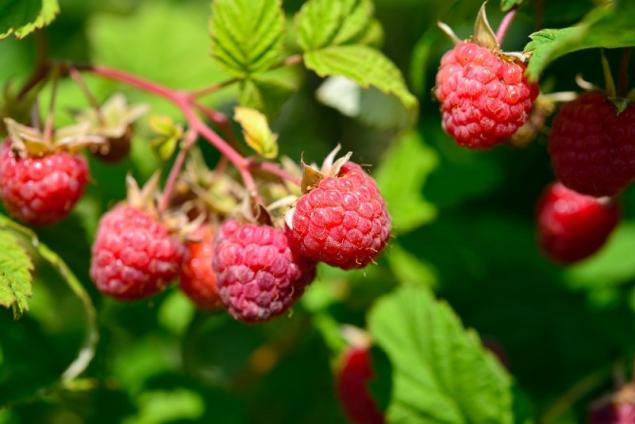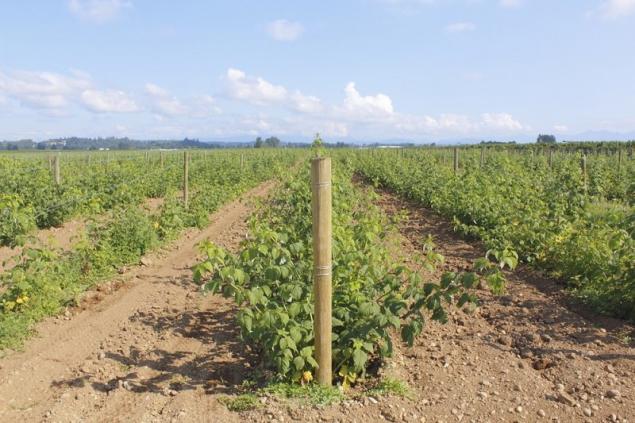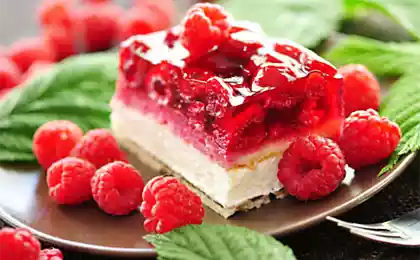205
How to increase the yield of raspberries
If you have a cottage where you grow raspberries, you will like our article today. We will tell you how to increase the yield of this useful plant, resorting to a typical technique of an experienced agrarian - pruning.

No need to once again introduce fertilizers into the soil or invent another “miracle remedy”. A little effort and a secator is all you need.

In addition, in this way, you can put raspberry ripening on a “pause” so that the next harvest is much larger.
You need to start with the fact that raspberries have two types of shoots. The first bear fruit now, and the second (scion) will yield the next year.
So, an experiment was conducted at one experimental station. Conditionally divided the crimson into two halves. One of them grew only fruit-bearing shoots, and the offspring were removed. And on the other part of the crimson, on the contrary, fruit-bearing shoots were removed, leaving only offspring that should bear fruit later.

As a result, raspberries spent energy on only one type of shoot. And each of the groups of processes gave a better than usual result. The offspring were distinguished by the best appearance, which ensured a high harvest next year. And fruit shoots showed increased yield and "additional" berries.

You can do the same thing at your home. Divide it in two. One of them removed all the new shoots and those that will appear, leave only last year. Overwinters raspberry For the first year, leave the crimson on the other part, adding new ones to them. For the winter, the second plantation will leave with shoots that will yield the next year, and the first will winter clean, free. There will be many new shoots in the spring. They'll be back in a year.

Thus, the parts of the crimson will change with each other over the years. One year is better to collect the first part, the other year is the second. On one part the crop grows, on the other - offspring. It is best to plant raspberries in rows.
How to plant raspberries
At the beginning and at the end of each row of crimson, beat a stake 130-140 cm high. To them at a level of about 1 m from the ground, crossbars 120-150 cm long are attached. Stretching the wire, it will serve as a support for stems and raspberries. If they will sag, use hornets.

Even hanging raspberries perfectly shade the soil, which will prevent the appearance of weeds. In order to avoid weeds at all, several times a season treat the ground with a hoe no deeper than 5 cm from the surface. This will help and fight pests, and improve the condition of the root system in raspberry bushes.
How to fertilize raspberries
It is best to use liquid organic fertilizers. Just pour them on the surface of the soil, the plant will take its own. But you can also use pellets.

Interestingly, when using a separate method of growing raspberries, it does not matter how good the variety itself is. This method will allow the bushes to give the highest quality harvest.

Obviously, this method is not suitable for one. raspberry. Don’t be afraid to take a crimson in a few dozen square meters. The result will still recoup all energy costs. In addition, as we said earlier, you will not need any chemicals or expensive fertilizers to get a high yield.

No need to once again introduce fertilizers into the soil or invent another “miracle remedy”. A little effort and a secator is all you need.

In addition, in this way, you can put raspberry ripening on a “pause” so that the next harvest is much larger.
You need to start with the fact that raspberries have two types of shoots. The first bear fruit now, and the second (scion) will yield the next year.
So, an experiment was conducted at one experimental station. Conditionally divided the crimson into two halves. One of them grew only fruit-bearing shoots, and the offspring were removed. And on the other part of the crimson, on the contrary, fruit-bearing shoots were removed, leaving only offspring that should bear fruit later.

As a result, raspberries spent energy on only one type of shoot. And each of the groups of processes gave a better than usual result. The offspring were distinguished by the best appearance, which ensured a high harvest next year. And fruit shoots showed increased yield and "additional" berries.

You can do the same thing at your home. Divide it in two. One of them removed all the new shoots and those that will appear, leave only last year. Overwinters raspberry For the first year, leave the crimson on the other part, adding new ones to them. For the winter, the second plantation will leave with shoots that will yield the next year, and the first will winter clean, free. There will be many new shoots in the spring. They'll be back in a year.

Thus, the parts of the crimson will change with each other over the years. One year is better to collect the first part, the other year is the second. On one part the crop grows, on the other - offspring. It is best to plant raspberries in rows.
How to plant raspberries
At the beginning and at the end of each row of crimson, beat a stake 130-140 cm high. To them at a level of about 1 m from the ground, crossbars 120-150 cm long are attached. Stretching the wire, it will serve as a support for stems and raspberries. If they will sag, use hornets.

Even hanging raspberries perfectly shade the soil, which will prevent the appearance of weeds. In order to avoid weeds at all, several times a season treat the ground with a hoe no deeper than 5 cm from the surface. This will help and fight pests, and improve the condition of the root system in raspberry bushes.
How to fertilize raspberries
It is best to use liquid organic fertilizers. Just pour them on the surface of the soil, the plant will take its own. But you can also use pellets.

Interestingly, when using a separate method of growing raspberries, it does not matter how good the variety itself is. This method will allow the bushes to give the highest quality harvest.

Obviously, this method is not suitable for one. raspberry. Don’t be afraid to take a crimson in a few dozen square meters. The result will still recoup all energy costs. In addition, as we said earlier, you will not need any chemicals or expensive fertilizers to get a high yield.






















